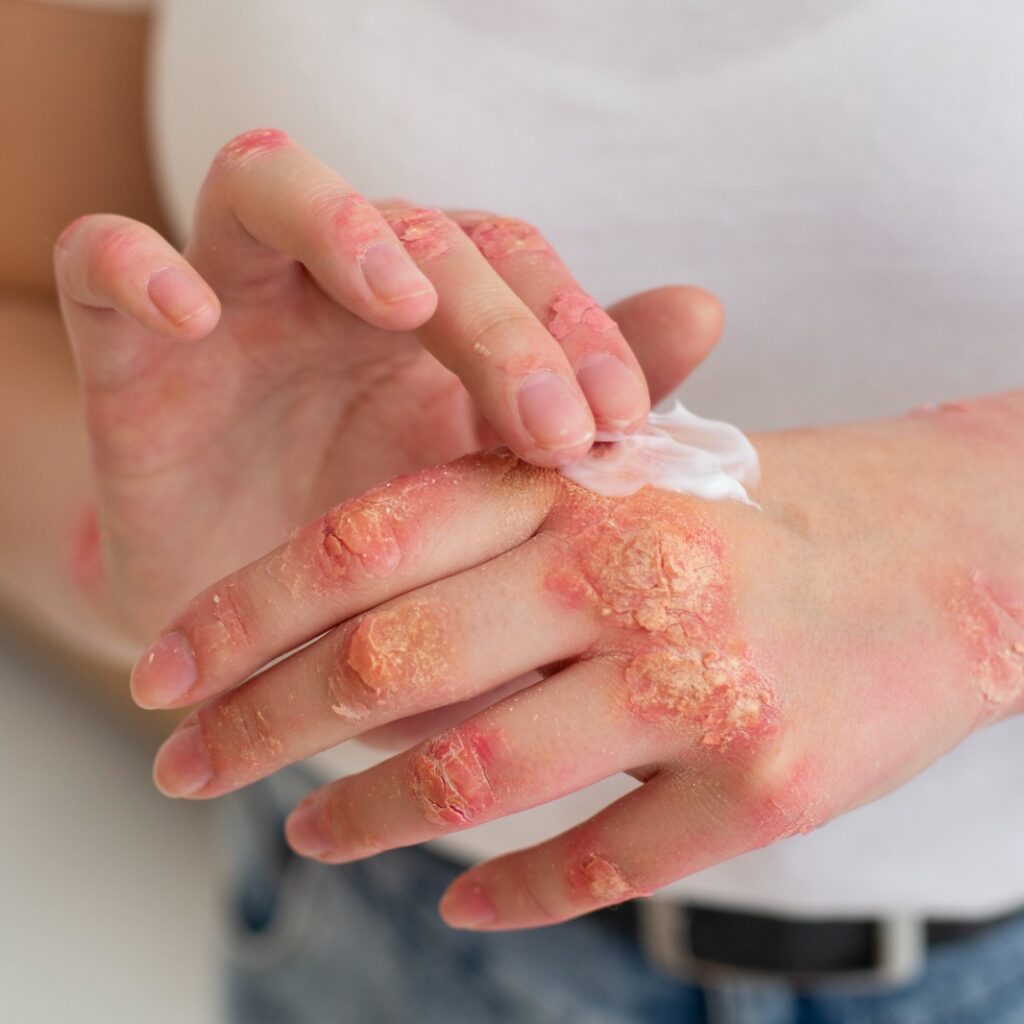Spiders are often found in homes and gardens, and most of them are harmless, doing a great job at controlling pests. However, a small number of spider species can give painful or even dangerous bites.
These risky spiders are very rare compared to the harmless ones. It’s good to know about them so you can be careful around spiders and know what to do if you or someone gets bitten by one of the rare, problematic ones.
Identifying Common Spider Bites
- Brown Recluse Spider Bite
Identifications: Brown recluse spider bites often begin as a small, itchy red bump and can progress to a painful ulcer with a blue or purple center. Severe cases may lead to tissue damage.
Description: These elusive spiders are usually found in dark, undisturbed places. Prevention involves checking clothing and shoes before wearing them, along with maintaining a clutter-free living space.
- Black Widow Spider Bite
Identification: Black widow spider bites can cause intense pain, muscle cramps, redness, swelling, and two puncture marks at the bite site.
Description: Recognizable by their red hourglass markings, black widow spiders tend to inhabit sheltered areas. Wearing protective gear when working in such locations is advisable.
- Common House Spider Bite
Identification: Common house spider bites are typically mild, resulting in minor swelling and itching akin to mosquito bites.
Description: These spiders are prevalent indoors. Regular cleaning and vacuuming to remove their webs are effective preventive measures.
Prevention Tips to Stay Bite-Free
Maintain a Clean Home
A clutter-free home not only looks inviting but also discourages spiders. Regular cleaning, dusting, and vacuuming are vital to remove both spiders and their prey.
Seal Entry Points
Spiders often enter through gaps and cracks around doors and windows. Using caulk or weather stripping to seal these entry points is a fundamental preventive step.
Use Natural Spider Repellents:
Natural repellents like diluted peppermint oil or vinegar-water solutions can deter spiders from constructing webs in your living spaces.
Shake Out Clothing and Shoes
Before dressing or putting on shoes, give them a thorough shake to ensure no spiders are hiding inside.
Wear Protective Clothing
When anticipating encounters with spiders, such as during gardening or attic cleaning, don protective gear like long sleeves, pants, and gloves to minimize the risk of bites.
Outdoor Maintenance
Regularly trimming bushes and keeping firewood and outdoor items away from your house minimizes hiding spots for spiders.
Professional Pest Control
If your spider infestation persists and home remedies prove ineffective, it’s advisable to reach out to professional pest control services like Al Rasa Pest Control. They have the expertise to assess the situation and implement effective measures, ensuring a spider-free environment in your home.
First Aid for Spider Bites
In the event of a spider bite, quick action is essential. Clean the bite area with soap and water, apply a cold compress to reduce swelling, and elevate the affected limb. Over-the-counter pain relievers can help manage pain and discomfort.
If you suspect a brown recluse or black widow bite, seek immediate medical attention. Provide as much information as possible about the spider’s appearance and any symptoms.
Spider bites, while unsettling, can be managed with knowledge and preventive measures. Regular cleaning, sealing entry points, and using natural repellents create a spider-free environment.
Recognizing common spider bites and administering appropriate first aid when needed ensures a safer and more comfortable living space.
Remember that spiders are a natural part of our environment, and by following these guidelines, you can coexist with them more comfortably while staying bite-free.

